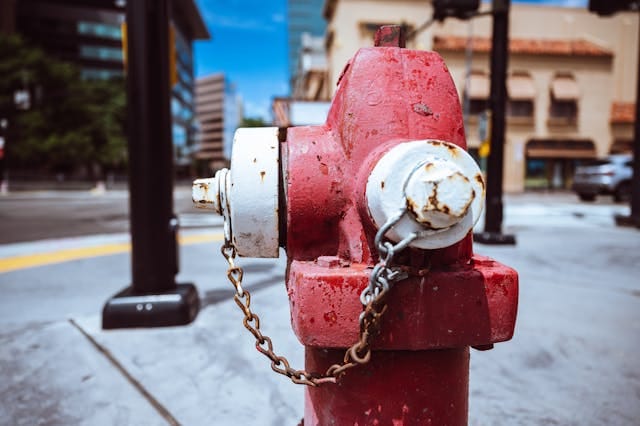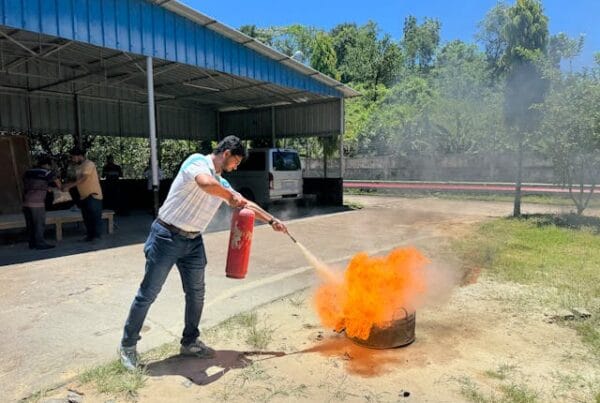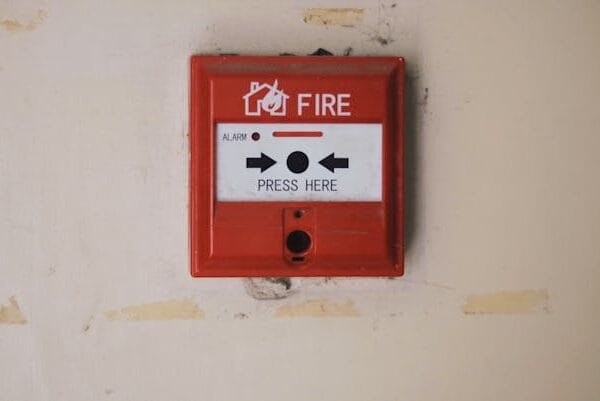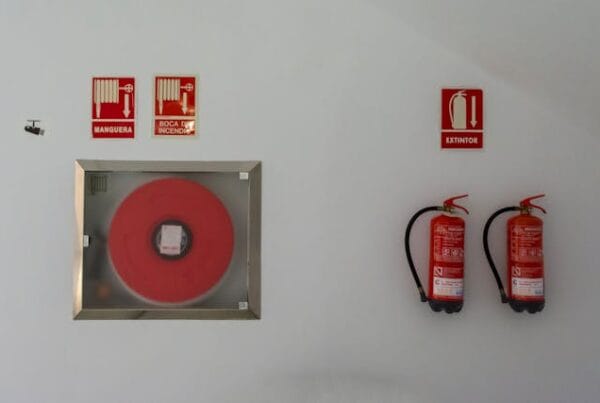When it comes to a building’s fire hydrant and sprinkler system, the pump room is its beating heart. The process of choosing a fire hydrant pump is one of the most critical technical decisions in designing a fire protection system. These pumps are responsible for delivering water at the required pressure and flow rate to extinguish a fire, especially in high-rise buildings where municipal water pressure is insufficient. A fire hydrant system is only as reliable as its pumps. At Sefirepro, we specialize in the design, installation, and maintenance of fire pump systems that form the backbone of your building’s active fire defense. This guide will demystify the different types of pumps and outline the key factors you need to consider.
A complete fire pump set typically consists of three pumps working in concert: the main electric pump, the backup diesel pump, and the jockey pump. Each has a distinct and vital role to play in ensuring your system is always ready.
Understanding the Trio: The Roles of Each Fire Pump
A standard, compliant fire pump configuration is built on redundancy and automation. Choosing a fire hydrant pump system means understanding how these three components work together.
1. The Electric Fire Pump (Main Pump)
This is the primary workhorse of the system. Powered by the building’s main electrical grid, the electric pump is designed to activate automatically when the pressure in the fire protection system drops significantly, which occurs when a sprinkler head opens or a hydrant valve is used.
- Function: To supply the main volume and pressure of water needed to fight a fire.
- Advantages: Relatively quiet, lower maintenance, and generally less expensive to operate than a diesel pump.
- Key Consideration: Its biggest vulnerability is its reliance on electricity. In a fire, power outages are common, which could render this pump useless without a backup generator.
2. The Diesel Fire Pump (Backup Pump)
The diesel pump is the essential backup. It serves the exact same function as the electric pump but is powered by its own diesel engine. This makes it completely independent of the building’s electrical grid.
- Function: To take over automatically if the electric pump fails to start or if the building loses power.
- Advantages: Extreme reliability during power outages, providing a crucial layer of redundancy.
- Key Consideration: Requires more maintenance (fuel checks, battery tests, engine servicing) and produces more noise and exhaust, necessitating proper ventilation in the pump room.
3. The Jockey Pump (Pressure Maintenance Pump)
The jockey pump is a small but essential component. Its job is not to fight fires but to maintain the standing pressure within the fire sprinkler and hydrant pipes.
- Function: To compensate for minor, permissible pressure drops in the system due to small leaks. This prevents the large, powerful main pumps from cycling on and off unnecessarily, which would cause significant wear and tear.
- How it Works: The jockey pump is set to activate at a pressure slightly below the system’s normal static pressure and turn off once that pressure is restored. If a larger pressure drop occurs (indicating a fire), the main electric or diesel pump will then take over.
Key Factors in Choosing a Fire Hydrant Pump System
The process of choosing a fire hydrant pump system is dictated by fire engineering calculations and local regulations, such as the Indonesian Fire Safety Standards (SNI). Here are the primary factors our engineers at Sefirepro consider:
- Required Flow Rate (GPM/LPM): This is the volume of water the pump must deliver, measured in Gallons Per Minute or Liters Per Minute. It is calculated based on the building’s size, hazard classification, and the number of sprinklers or hydrants expected to operate simultaneously.
- Required Pressure (PSI/Bar): This is the force needed to push water to the highest and most remote point in the building while still maintaining enough pressure for effective firefighting. The height of the high-rise building is the most significant factor here.
- Water Source Reliability: The type and capacity of the water source (e.g., a dedicated reservoir, city water main) will influence the pump specifications. The pump must be matched to the available water supply.
- Power Source Reliability: The stability of the local electrical grid is a major consideration. In areas with frequent power outages, the reliability of the diesel pump is even more critical.
- Space and Location of the Pump Room: The pump room must have adequate space for the pumps, controllers, and piping, as well as proper ventilation, especially for the diesel engine.
Professional Installation and Maintenance is Crucial in Choosing Choosing a Fire Hydrant Pump System
Once you have selected the right pumps, their performance is entirely dependent on the quality of installation and maintenance. A poorly installed pump can fail due to vibration, misalignment, or improper electrical connections.
Sefirepro’s installation and maintenance services ensure that:
- Pumps are installed on a proper foundation according to manufacturer and SNI specifications.
- All control panels are correctly wired and programmed.
- Weekly, monthly, and annual tests are conducted as per international standards like NFPA 25. This includes churn tests (no-flow) and full-flow tests to ensure the pumps perform as designed.
Conclusion: Power Your Fire Defense with Sefirepro
Choosing a fire hydrant pump system is a decision that has a direct impact on the ability to save your property and the lives within it during a fire. The synergistic operation of the electric, diesel, and jockey pumps provides a robust, reliable, and redundant water supply for your most critical life safety systems.
Don’t leave this vital decision to chance. Let the experts at Sefirepro assess your building’s specific needs and recommend a pump system that is powerful, reliable, and fully compliant. Contact us today for a consultation on your fire pump requirements.





